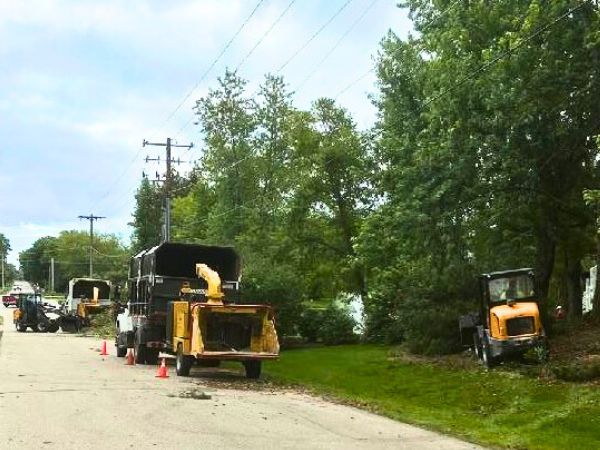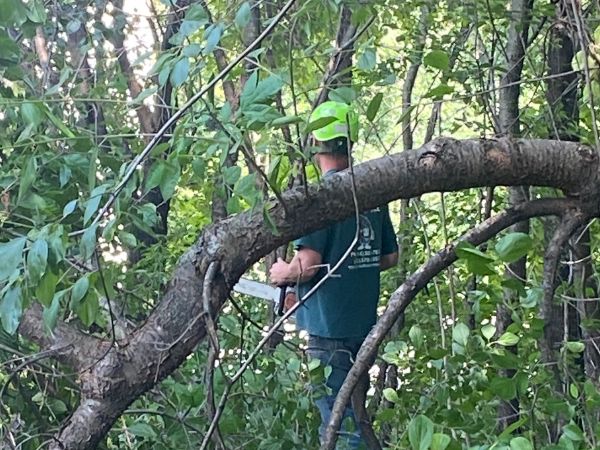Tree Trimming
Wisconsin Tree Trimming Services Explained
As a professional business offering tree removal and trimming services in Wisconsin, we understand the importance of keeping your property safe and aesthetically pleasing. Among the various tree care practices, tree trimming stands out as a fundamental technique to maintainthe health, aesthetics, and safety of the trees on your property.
What is Tree Trimming?
Tree trimming, sometimes referred to as tree pruning, involves selectively cutting branches from a tree. This process is executed to remove dead or overgrown limbs, enhance the tree’s shape, and ensure the safety of your property and its surroundings. Tree trimming can include selective pruning, crown reduction, deadwood removal, or thinning.
When Should Trees be Trimmed?

The Wisconsin DNR (Department of Natural Resources) Recommends that the best time to prune any deciduous tree is when it is dormant, in the winter months, typically November to March in Wisconsin. The second best time is mid-summer after leaf growth is complete. The worst time to do major pruning is in the spring when tree buds and/or leaves are still growing and food reserves are low. Dead limbs may be removed at any time of year.
The amount to remove depends on the tree’s size, species, and age as well as your pruning objectives. Young trees can tolerate more branch removal than mature trees. This is just another reason to hire a professional tree service like A New Leaf Tree Service.
When is Tree Trimming Needed?

Tree Health
Diseased or infested branches can harm the entire tree if they’re not removed. Timely trimming prevents the spread of such conditions.
Safety Concerns
Overgrown or dead branches can be a significant hazard. They can fall during storms or high winds, causing damage to property, power lines, or even posing a risk to people & pets.

Aesthetics
Regular trimming and proper shaping keep a tree looking its best, promoting better landscape aesthetics. Additionally, removing deadwood can completely transform the appearance of your property.
Sunlight and Growth
Proper trimming ensures every part of the tree receives adequate sunlight, fostering balanced growth of the entire ecosystem of your property.
How Do We Perform Tree Trimming Services in Wisconsin?

Assessment
We begin by assessing the tree or trees to determine the branches that need trimming and to ensure the overall health of the tree.
Safety Measures
We are trained and certified to follow all the safety practices and procedures to ensure the job will be completed without incident.

Precision Cuts
Using industry-standard equipment, our trained, ISA-certified arborists make precise cuts to ensure the tree remains healthy and the chances of diseases spreading are minimized.
Clean-Up
We clean the area, ensuring that your property is free of debris.
Environmentally-Friendly Disposal
We adhere to Wisconsin’s environmental guidelines, ensuring trimmed branches are disposed of responsibly.
In conclusion, tree trimming is an essential aspect of property management in Wisconsin. Not only does it enhance the safety and aesthetics of your space, but it also contributes to the health and longevity of your trees. As dedicated tree service providers, we’re committed to delivering top-notch services tailored to your needs.